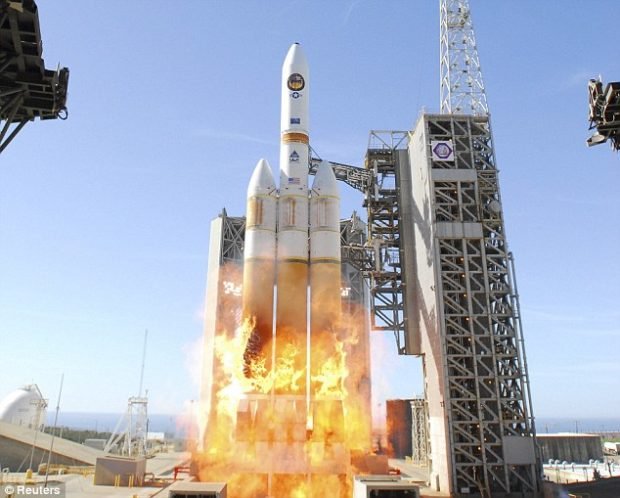Watch: SpaceX to launch Falcon 9 with PAZ satellite
SpaceX is hoping to launch the next Falcon 9 rocket on Thursday morning carrying Hisdesat’s PAZ satellite into low-Earth orbit.
The private space company is targeting 9:17 a.m. EST for the launch from Vandenberg Air Force Base in California with satellite deployment to occur 11 minutes after launch.
The rocket’s first stage was previously used to lunch FORMOSAT-5 in August of 2017. Although recovery is possible, SpaceX has decided not to land the first stage for re-use.
The payload will be jointly used by Hisdsat and Airbus and will serve both commercial and government needs.
Hisdesat’s PAZ satellite is equipped with an advanced radar instrument designed for high flexibility, and with the capability to operate in numerous modes allowing for the choice of several different image configurations. It will be able to generate images with up to 25 cm resolution, day and night and regardless of the meteorological conditions. Designed for a mission life of five and a half years, PAZ will orbit Earth 15 times per day, covering an area of over 300,000 square kilometers from an altitude of 514 kilometers and a velocity of seven kilometers per second. On its slightly inclined quasi-polar orbit, PAZ will cover the entire globe in 24 hours, serving both government and commercial needs.
PAZ also features a sophisticated Automatic Identification System (AIS), simultaneously combining for the first time ship AIS signals and Synthetic Aperture Radar (SAR) imagery, increasing the monitoring capacities of the maritime domain worldwide. It will also be equipped with a Radio Occultation and Heavy Precipitation experiment (ROHP) from the Institute of Space Science del Consejo Superior de Investigaciones Científicas (ICE-CSIC). For the first time ever, Global Navigation Satellite System (GNSS) Radio Occultation measurements will be taken at two polarizations, to exploit the potential capabilities of polarimetric radio occultation for detecting and quantifying heavy precipitation events.
Once in space, PAZ will share the same orbit as the TerraSAR-X and TanDEM-X radar satellites. They will be operated as a very high-resolution SAR satellite constellation. The addition of this third satellite will reduce revisit time and increase acquisition capacity, leading to subsequent benefits for various applications. All three satellites feature identical ground swaths and acquisition modes. The new setup will be jointly utilized by Hisdesat and Airbus




